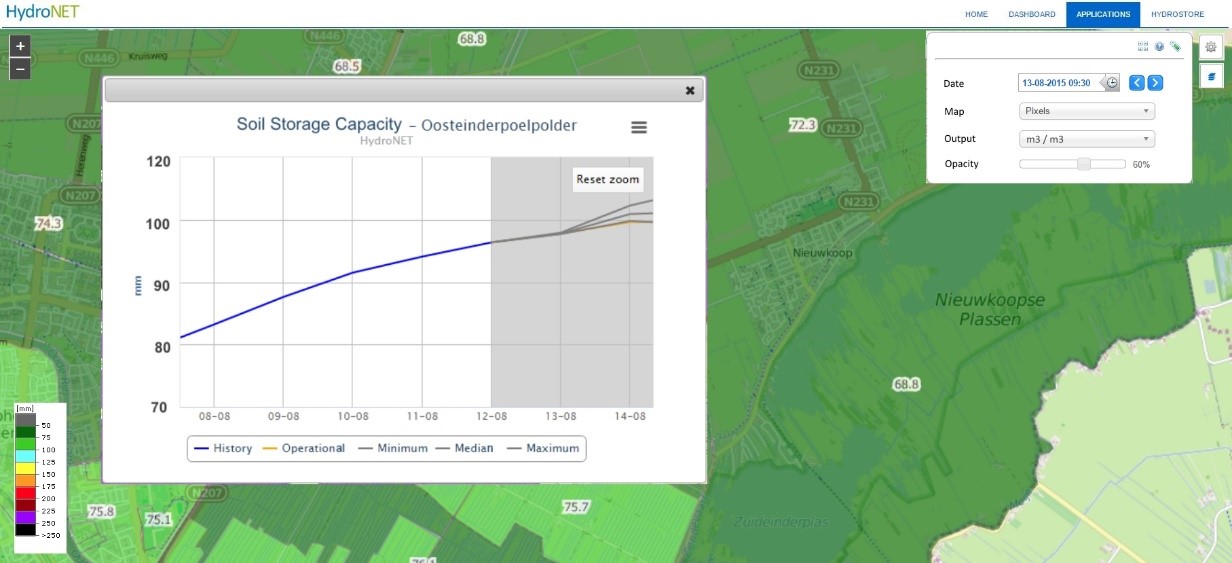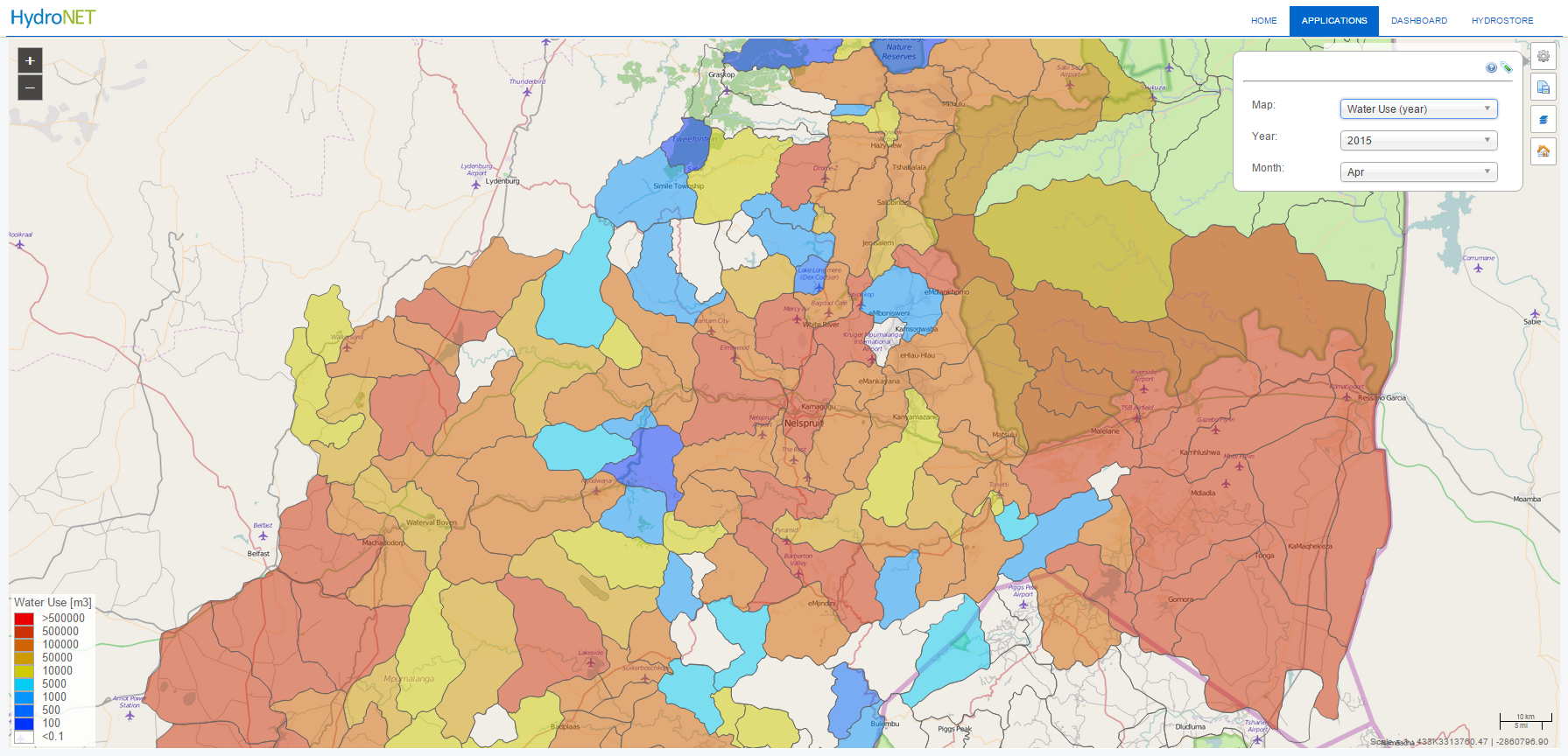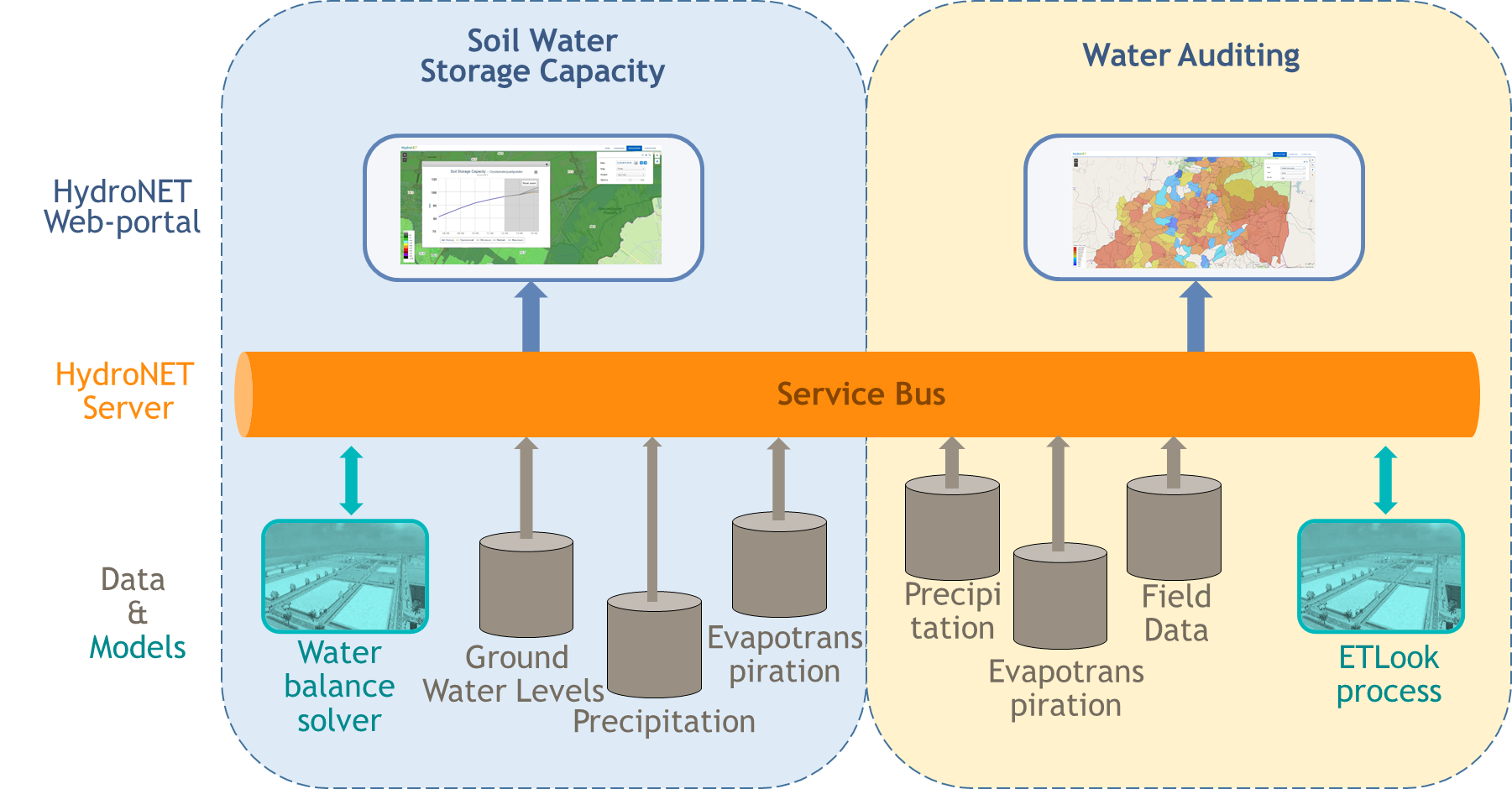
Objectives of the service
Water managers all over the world are confronted with increasing challenges related to climate change. Floods and drought resulting from increasingly severe weather conditions cause worldwide economic damage, loss of nature, increased political and societal tensions and ultimately the loss of lives.
The lack of proper information on water availability is one of the most challenging obstacles in water management, especially in the less developed economies. In many cases data is not available, incomplete or inaccessible. This leads to ineffective or erroneous decision making and can even cause more water problems.
The OWASIS-NL consortium believes adequate information is key to solving current and future water challenges. The consortium provides two innovative services to improve water resource management. These applications are the soil water storage capacity service and the water auditing service.
Water managers have a wide range of (technological) measures at their disposal to prevent and mitigate the effects of floods and drought. With limited time and financial resources, it is crucial to facilitate the decision making process with proper, undisputed and timely information. This is where OWASIS-NL can make a difference.
Users and their needs
This project demonstrates the ‘soil water storage capacity service’ and the ‘water auditing service’. These services provide state-of-the-art information on water availability and water resource use to water managers in the Netherlands and South Africa. With the extension of the project (CCN), the ‘water auditing service’ is demonstrated for additional use cases in South Africa as well as water managers in Colombia and The Netherlands.
Soil Water Storage Capacity Service
Water managers in the Netherlands are responsible for the water distribution within a river basin or catchment area. Representatives from Dutch Regional Water Authorities indicated the lack of reliable information on the water storage capacity of the soil as the most challenging problem in current water management. This hydrological variable determines both the risk of flooding during wet periods, and the need for irrigation in dry periods.
The soil water storage capacity service will provide water managers with valuable insight in the current and forecasted water storage capacity of the soil. The service uses evapotranspiration data from satellites, precipitation from radar and groundwater data to calculate the water storage capacity of the soil. This information is presented to the end user in an easy to use web application.

Water Auditing Service
South Africa is facing a severe water shortage. To regulate the amount of water being used for irrigation, South Africa introduced a water licensing mechanism in the National Water Act (NWA). This mechanism ensures equal distribution and efficient use of the available water resources. Auditing on compliance of water allocation is a major challenge for water managers in South Africa. Irrigated fields are spread over a vast area and the number of fields to audit is enormous.
The Water Auditing service greatly enhances the effectiveness of the agency to audit water use. The service uses evapotranspiration data from satellites, and rainfall data from rain gauges and radar to calculate water use linked to irrigation. The information is compared with the allocated amount of water to evaluate water use per farm. This information is displayed in graph and map format on various spatial scales.

The following activities are covered under the CCN phase of the project:
- Adapt the water auditing service for Irrigation Boards, which cover a smaller area than regional water managers and require more detailed information on water use.
- Expand the water auditing service to regional water authorities in Colombia.
- Adapt the water auditing service to provide Dutch water authorities insight in spatial and temporal occurrence of irrigation in The Netherlands
Service/ system concept
The services will be developed using the price winning HydroNET platform. To do so, the required hydrological data sources will be connected to the HydroNET server. On the HydroNET server, algorithms and models are used to calculate the soil water storage capacity and the water use. The information is presented to the end users in interactive maps and graphs through a regular web-browser, accessible via desktop, tablet or mobile phone.

Space Added Value
Information on water distribution can be obtained from a number of resources like observations from the crowd, gauges, in situ-sensors, remote sensing and models. The last couple of decades the opportunities to monitor water availability from space have become more and more promising. With the launch of new satellites more data becomes available that could benefit water managers.
Two types of space assets will be integrated in the OWASIS-NL services: Earth Observation and Satellite Navigation. Earth observation is used to obtain the precipitation forecasts, soil moisture contents and evapotranspiration data. GNNS technology is used to obtain the location of the user to provide local data on his mobile phone or tablet and for geotagging of in-situ measurements required for validation and calibration.
Space assets provide a clear added value compared to other available technology:
- Both services require high resolution evapotranspiration data. The input data is gained from multiple satellite sources and after pre-processing used to calculate water usage information monthly. Without EO technology it would not be possible to produce high resolution evapotranspiration images.
- The soil storage capacity service uses the Harmonie (Netherlands) and GFS / ECMWF numerical weather forecast models. These models use a variety of data sources including satellite observations.
- The usage of space assets allows frequent, repetitive, and objective monitoring of water use in large areas. EO provides regular data on water usage, it is impossible to do in situ inspections at this scale and interval due to budget limitations.
Current Status
- December 2016: start of the project
- February 2017: user requirement workshops in the Netherlands and South Africa.
- March 2017: completion of the baseline design review (BRD)
- July 2017: completion of the critical design review (CDR)
- July – December 2018: configuration, development & implementation.
- January 2018 – Successful completion of factory acceptance test
- February – April 2018 – Site acceptance test, training of pilot users, pilot kick-off meetings.
- April 2018 – Start of pilot activities with users in the Netherlands and South Africa
- October 2018 - completion of the pilot activities & acquisition activities. Pilot was successful. Agreements were established with end users to continue the service after the pilot.
- December 2018 - Pilot project was finalized. Opportunities for upscaling to other use-cases and other countries are being investigated.
- October 2020: start of CCN: upscale Water Auditing services to include other use-cases and countries.
- December 2020: user requirement workshops in The Netherlands, Colombia and South Africa
Prime Contractor(s)
Subcontractor(s)




